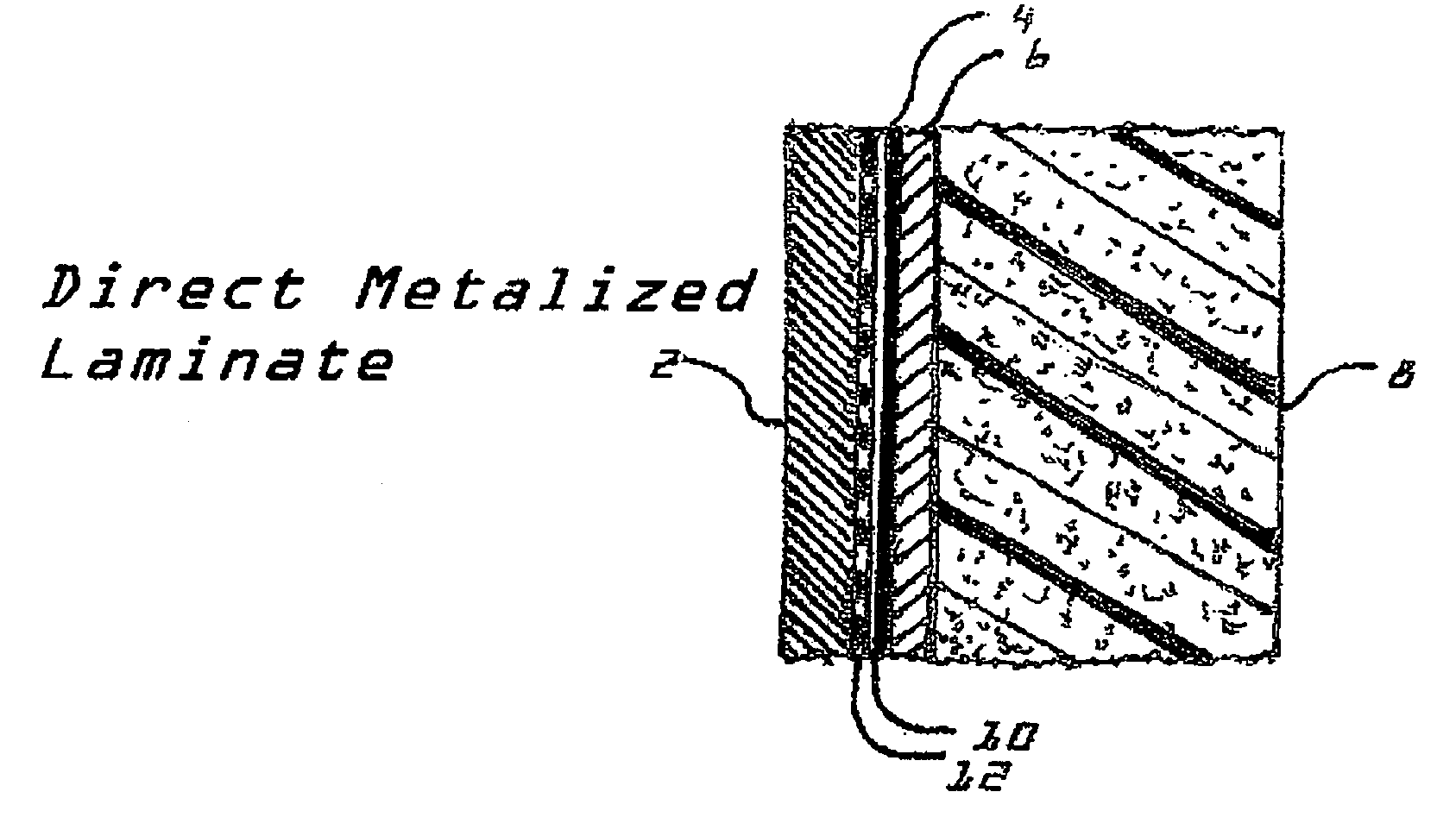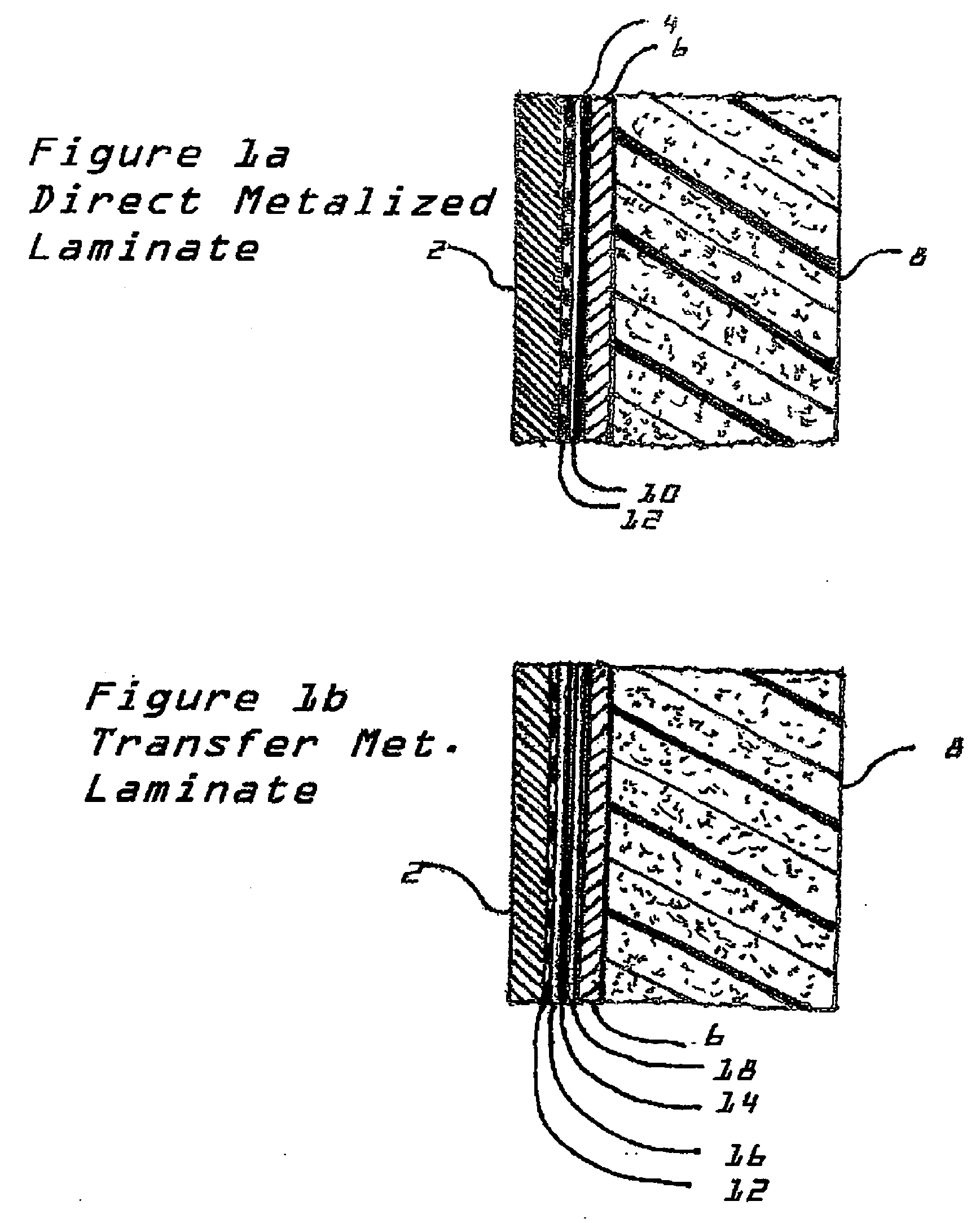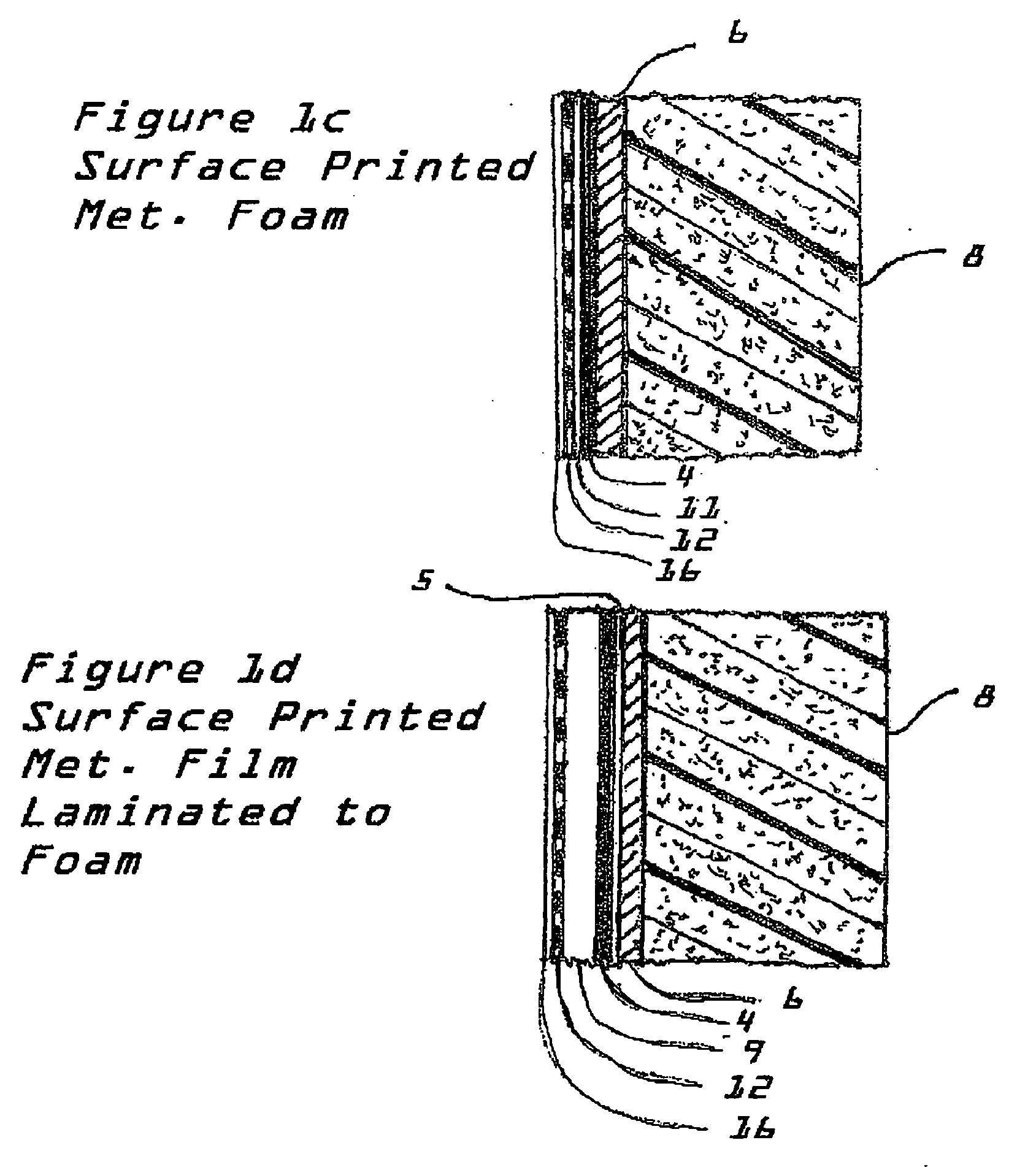Metallized insulative labeling material
a technology of insulative labeling and metal lining, which is applied in the direction of transportation and packaging, instruments, other domestic objects, etc., can solve the problems of not being able to address a broad segment of the labeling and packaging market, and the cost of labeling is limited mainly to specialty/promotional applications, etc., to enhance the insulative and decorative aspects of primary packaging materials, bright and attractive finish, and enhance the insulating effect of foam
- Summary
- Abstract
- Description
- Claims
- Application Information
AI Technical Summary
Benefits of technology
Problems solved by technology
Method used
Image
Examples
example 1
[0099]Water filled, 12 oz. aluminum beverage containers were cooled in a refrigerator to 38° F., then subjected to a free convection heating environment in bright sunlight, maintained at an ambient temperatures ranging from 80-90° F. in four separate tests. The heating rate for these containers was measured and the average heat transfer coefficient for free convection over the range measured was calculated. The average heat transfer coefficient so obtained was next measured for these same containers, but having an outer sheath of coextruded foam structure material made from a polystyrene core as described above and a compounded solid cap layer of high impact polystyrene as described above that is non-metallized and cover the outer walls of the container and has a thickness of 0.15 mm The following table shows the impact of the foam label:
Max.Min.Average HeatTemperatureTemperatureTransferDifferentialDifferentialCoefficentTest° F.*° F.**Cal. / min ·° C. · m21 Control47.754942 Control49....
example 2
[0100]Next, these same containers were compared to metallized foam labeled containers. In this instance the metallization was obtained by directly metalizing the outer skin layer of a previously corona treated foam sheet with aluminum. Corona treatment of the samples was done at Polymeric Converting, Enfield, Conn. The metalizing of the materials was done at Atlas Metalizing, New Britain, Conn. and the thickness of the metal layer was about 200 Å. The material was for all intents and purposes identical to the unmetallized sheet used in Example 1, except that the skin contained no TiO2 filler, which is used to enhance the whiteness and opacity of the standard formula used for the coextruded foam. The formula used for the skin resin was 50% high impact polystyrene+50% clear, high temperature crystal polystyrene. This particular formula provided a measured gloss on the surface of the foam lamination of 55.4%, measured using a Trigloss Master sheen meter at 60° (produced by Sheen Instru...
example 3
[0101]In this next example, the impact of the brightness of the metallized layer was evaluated. In this instance, the skin layer of the coextruded foam was modified by replacing the high impact polystyrene resin with “K resin” produced by Chevron Phillips Chemical Company. The particular resin used was the KR-03 grade, containing no wax ingredient. The gloss measured on the surface of this sample before metalizing with a layer of aluminum having a thickness of 200 Å, was 102.3%(Commodore Plastics test described earlier in Example 2). The results are shown in the following table:
Max.Min.Average HeatTemperatureTemperatureTransferDifferentialDifferentialCoefficentTest° F.*° F.**Cal. / min ·° C. · m2 1 Control47.75494 2 Control49.05534 3 Control49.417.4443 4 Control49.715.4358Average Controls457 9 met. Foam41.317.122510. met. Foam49.721.4236Average met. Foam230.5Average Reduction49.6%*maximum temperature difference at start of test between the fluid and ambient conditions**minimum tempera...
PUM
| Property | Measurement | Unit |
|---|---|---|
| Temperature | aaaaa | aaaaa |
| Temperature | aaaaa | aaaaa |
| Temperature | aaaaa | aaaaa |
Abstract
Description
Claims
Application Information
 Login to View More
Login to View More - R&D
- Intellectual Property
- Life Sciences
- Materials
- Tech Scout
- Unparalleled Data Quality
- Higher Quality Content
- 60% Fewer Hallucinations
Browse by: Latest US Patents, China's latest patents, Technical Efficacy Thesaurus, Application Domain, Technology Topic, Popular Technical Reports.
© 2025 PatSnap. All rights reserved.Legal|Privacy policy|Modern Slavery Act Transparency Statement|Sitemap|About US| Contact US: help@patsnap.com



